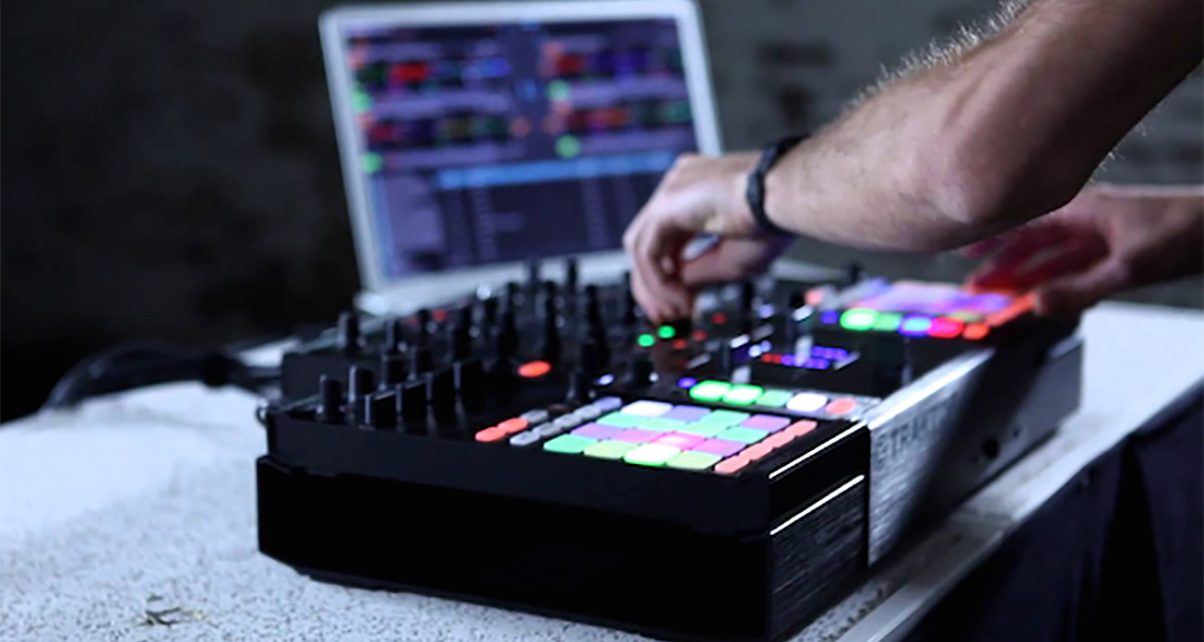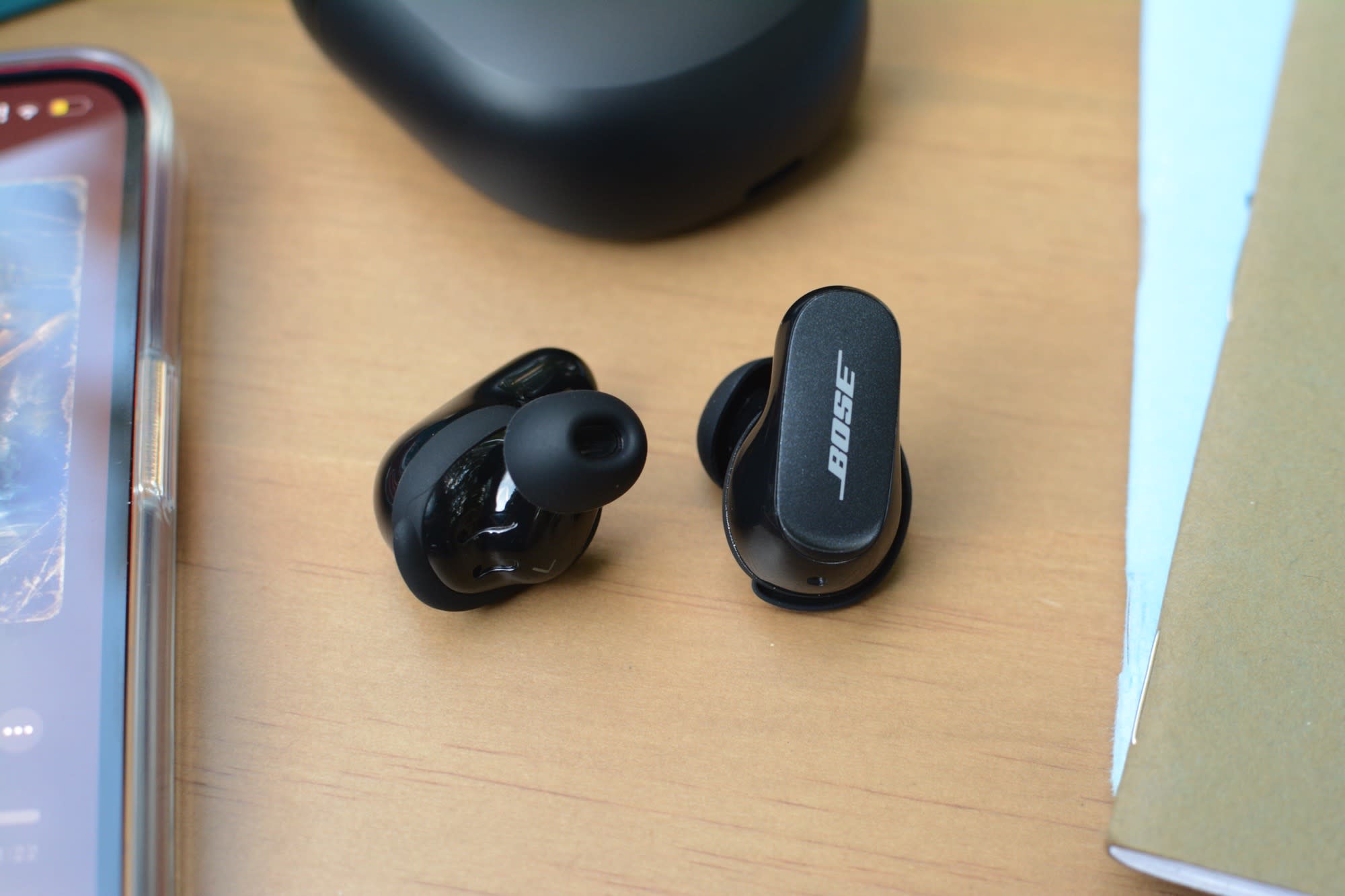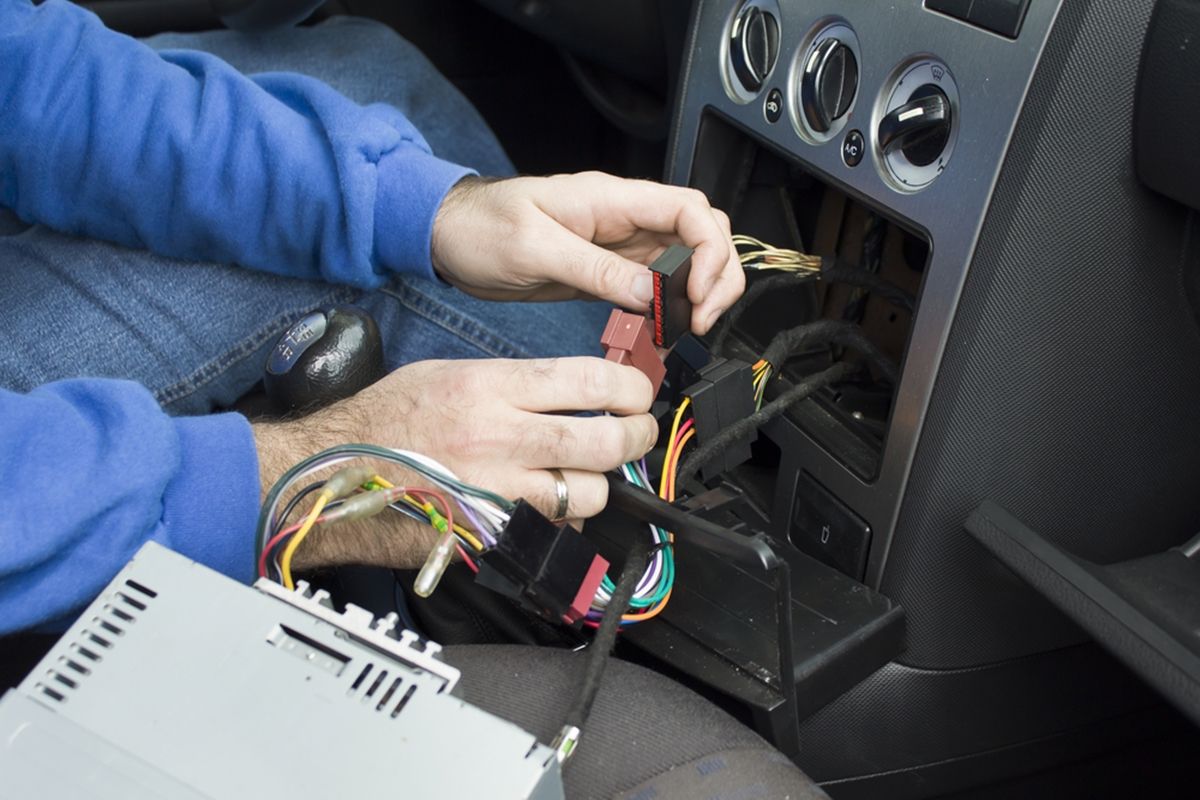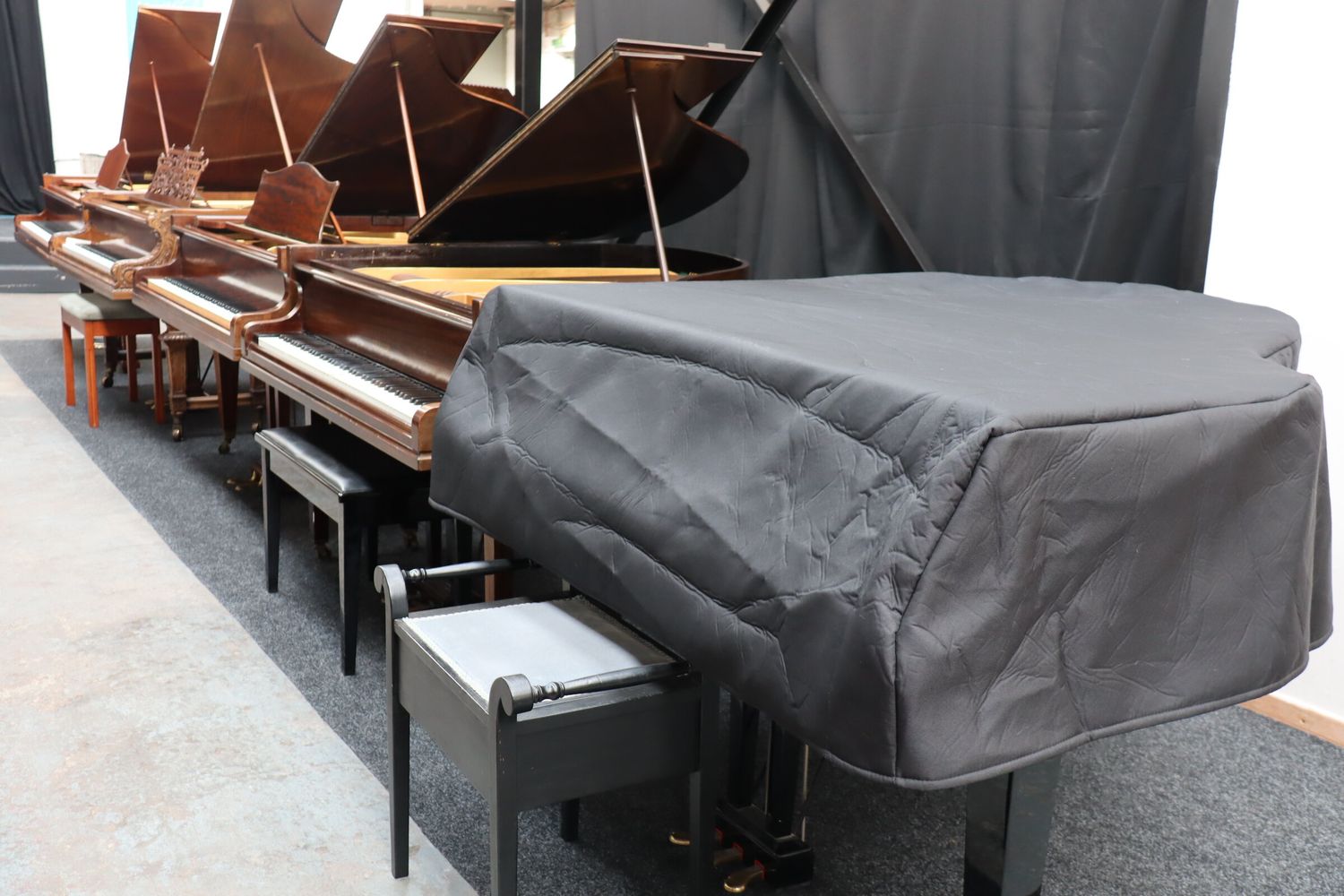Home>Instruments>Piano>How To Take Apart A Piano
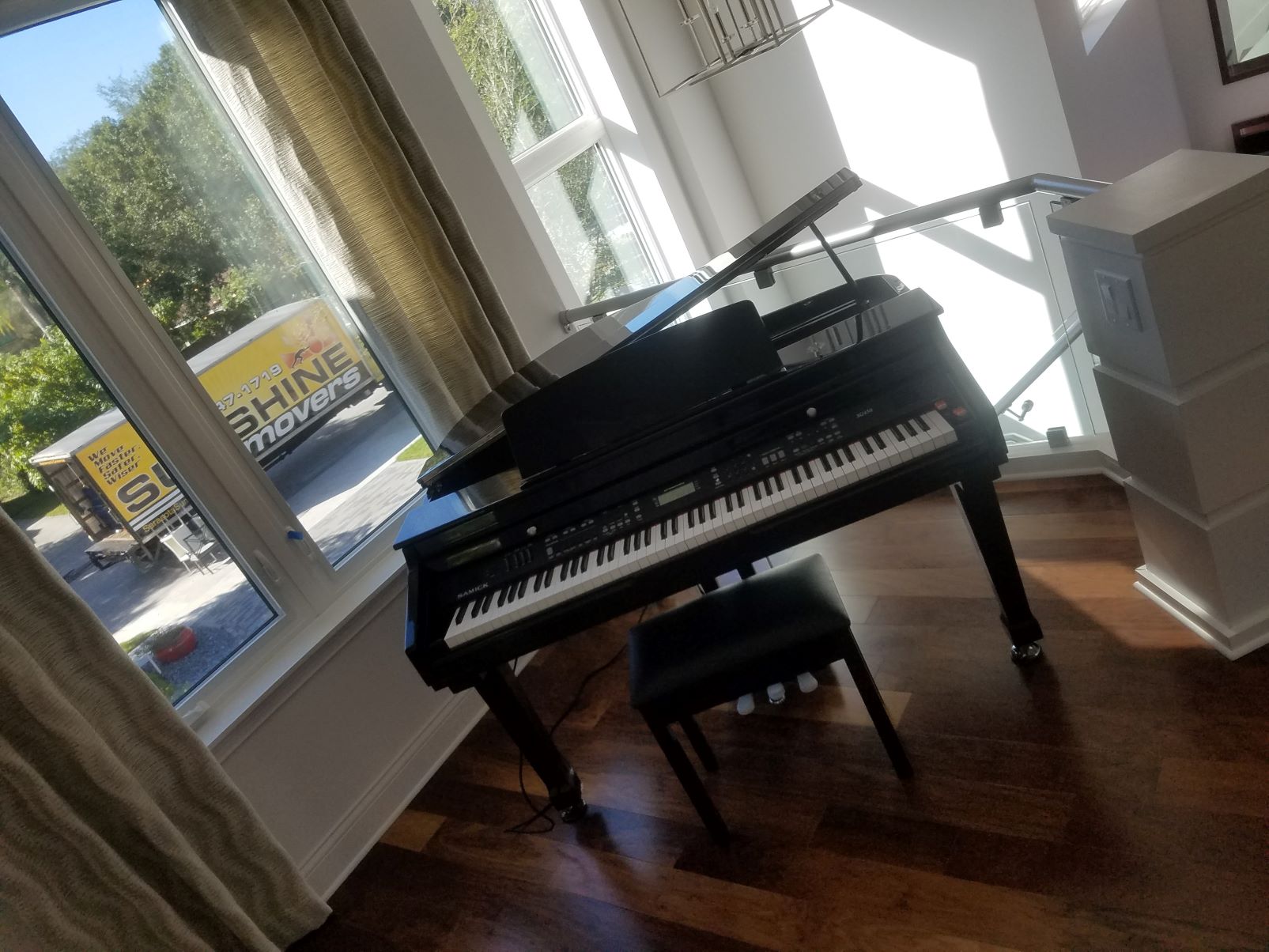

Piano
How To Take Apart A Piano
Published: February 10, 2024
Learn how to safely disassemble a piano with step-by-step instructions. Discover the essential tools and techniques for piano dismantling. Unlock the secrets to taking apart a piano like a pro!
(Many of the links in this article redirect to a specific reviewed product. Your purchase of these products through affiliate links helps to generate commission for AudioLover.com, at no extra cost. Learn more)
Table of Contents
Introduction
Pianos are magnificent instruments that have the power to fill a room with beautiful melodies and evoke a wide range of emotions. Whether it's an old, worn-out piano that's beyond repair or you're simply looking to repurpose its parts, the process of disassembling a piano requires careful planning, precision, and the right tools. In this comprehensive guide, we will explore the step-by-step process of taking apart a piano, providing valuable insights into the tools and equipment needed, preparing the piano for disassembly, and the dismantling of its various components.
Taking apart a piano is a task that requires patience, attention to detail, and a deep understanding of the instrument's construction. It's not just about unscrewing a few bolts and lifting off the lid; it's a meticulous process that involves deconstructing the piano in a methodical manner to ensure the safety of both the person disassembling it and the integrity of the piano's components.
Whether you're a piano enthusiast, a professional piano technician, or someone looking to repurpose a piano for a creative project, this guide will provide you with the knowledge and insight needed to undertake the disassembly process with confidence. So, roll up your sleeves, gather your tools, and let's delve into the art of taking apart a piano.
Tools and Equipment Needed
Before embarking on the journey of disassembling a piano, it’s essential to gather the necessary tools and equipment. Here’s a list of items you’ll need to ensure a smooth and efficient disassembly process:
- Protective Gear: Safety goggles, gloves, and a dust mask are crucial for safeguarding yourself from potential hazards such as wood splinters, dust, and debris.
- Tool Kit: A comprehensive set of hand tools including screwdrivers, wrenches, pliers, and a socket set will be indispensable for removing various components of the piano.
- Piano Dolly or Moving Straps: Maneuvering the heavy and bulky parts of the piano will be much easier with the help of a piano dolly or moving straps.
- Power Tools: While not always necessary, power tools such as a cordless drill or reciprocating saw can expedite the disassembly process, especially when dealing with stubborn screws or bolts.
- Labeling Materials: Stickers, masking tape, and a marker will aid in labeling and organizing the various parts and hardware to ensure seamless reassembly or proper disposal.
- Workbench or Table: Having a sturdy work surface to lay out and organize the disassembled parts will facilitate the process and minimize the risk of damage.
- Container for Small Parts: Utilize small containers or resealable bags to store and categorize the smaller hardware and components, preventing them from getting misplaced.
- Assistance: Enlist the help of a friend or family member, especially when dealing with heavy components, to ensure safety and ease of handling.
By ensuring that you have the appropriate tools and equipment at your disposal, you’ll be well-prepared to tackle the intricate task of disassembling a piano. With safety gear in place and the right tools at hand, the process can proceed smoothly, allowing you to dismantle the instrument with confidence and precision.
Preparing the Piano for Disassembly
Before diving into the physical disassembly of the piano, it’s crucial to undertake preparatory steps to ensure a structured and safe process. Here are the essential measures to take when preparing the piano for disassembly:
- Clean the Piano: Begin by thoroughly cleaning the piano to remove any dust, debris, or foreign objects that may impede the disassembly process or cause damage to the components.
- Secure the Lid and Keyboard Cover: Close and latch the piano lid and keyboard cover to prevent them from unexpectedly opening or getting damaged during the disassembly.
- Remove the Piano’s Legs: If the piano has detachable legs, carefully unscrew and remove them, ensuring that the piano is stabilized on a level surface.
- Document and Photograph: Take detailed photographs and notes of the piano’s current condition and the arrangement of its components. This documentation will serve as a valuable reference during reassembly.
- Identify and Label Components: Use labeling materials to mark and categorize the various parts of the piano, including screws, keys, pedals, and other hardware, to facilitate organized reassembly.
- Assess Structural Integrity: Evaluate the structural integrity of the piano, identifying any weak or damaged areas that may require special attention during disassembly.
- Allocate Adequate Workspace: Ensure that you have ample space to maneuver around the piano and lay out the disassembled parts, minimizing the risk of damage or accidents.
By meticulously preparing the piano for disassembly, you’ll lay a solid foundation for a methodical and organized process. These preparatory steps not only enhance safety but also streamline the disassembly, setting the stage for a successful deconstruction of the instrument.
Removing the Keyboard
The keyboard of a piano is a complex and intricate assembly of keys, hammers, and action mechanisms. Properly removing the keyboard requires patience and precision to avoid damage to the delicate components. Here’s a step-by-step guide to removing the keyboard of a piano:
- Open the Lid and Keyboard Cover: Carefully lift the lid and open the keyboard cover to access the keys and internal mechanisms.
- Detach the Keyboard: Depending on the piano model, there are typically screws or bolts securing the keyboard in place. Using the appropriate tools, carefully remove these fasteners to release the keyboard assembly.
- Disconnect the Keyboard Mechanism: Once the keyboard is freed from its fastenings, delicately disconnect the action mechanism and any electrical connections, if applicable, while ensuring that no undue force is exerted on the components.
- Secure and Label Components: As the keyboard is removed, take care to secure and label the associated hardware and components, including screws, brackets, and any wiring, to facilitate organized reassembly.
- Transport and Store the Keyboard: Safely transport the detached keyboard to the designated workspace, ensuring it is placed on a flat and secure surface to prevent any damage or misalignment of the keys and action assembly.
By following these steps, you can effectively remove the keyboard of the piano, setting the stage for the subsequent disassembly of the instrument’s frame and soundboard. It’s essential to approach this process with caution and attention to detail, as the keyboard assembly is a critical and intricate component of the piano.
Taking Apart the Frame and Soundboard
Disassembling the frame and soundboard of a piano requires meticulous attention to detail and a methodical approach. These components are integral to the instrument’s structure and resonance, and their removal must be executed with precision. Here’s a comprehensive guide to taking apart the frame and soundboard of a piano:
- Secure the Soundboard: Before proceeding with the disassembly, secure the soundboard to prevent any unexpected movement or damage. The soundboard is a critical component responsible for amplifying the vibrations of the strings, and its integrity must be preserved.
- Remove the Strings: Carefully loosen and remove the strings from the tuning pins, ensuring that they are gently released to prevent any sudden movements that could cause damage or injury.
- Detach the Soundboard: With the strings removed, proceed to detach the soundboard from the piano’s frame. Depending on the piano model, this may involve unscrewing fasteners or brackets securing the soundboard in place.
- Inspect and Clean: Once the soundboard is removed, take the opportunity to inspect it for any signs of damage or wear. Additionally, clean the soundboard and its associated components to prepare them for potential reassembly or repurposing.
- Disassemble the Frame: With the soundboard removed, focus on disassembling the piano’s frame. This may involve unscrewing and carefully dismantling the structural components, such as the rim, braces, and other support elements.
- Organize and Store Parts: As the frame and soundboard are disassembled, meticulously organize and store the various components, ensuring that they are labeled and protected to maintain their condition for potential future use or disposal.
By following these steps, you can systematically disassemble the frame and soundboard of the piano, paving the way for the dismantling of additional components and the eventual disposal or repurposing of the instrument’s parts. It’s essential to approach this process with care and precision, acknowledging the significance of these components in the piano’s construction and functionality.
Dismantling the Pedals and Other Components
As the disassembly of the piano progresses, attention turns to the intricate components such as the pedals, keybed, and other vital elements that contribute to the instrument’s functionality and character. Dismantling these parts requires a delicate touch and careful organization to ensure their integrity and potential for reuse. Here’s a detailed guide to dismantling the pedals and other key components of a piano:
- Assess the Pedal Mechanism: Begin by assessing the pedal mechanism, identifying the fasteners or connections that secure it to the piano’s structure. Depending on the piano type, there may be sustain, soft, and una corda pedals, each requiring individual attention.
- Unfasten the Pedals: Using the appropriate tools, carefully unfasten the pedals from the piano, ensuring that each component is methodically detached and labeled to maintain its association with the correct mechanism.
- Inspect and Clean: Once the pedals are removed, take the opportunity to inspect their condition and clean any accumulated debris or residue. This step is essential if the pedals are intended for reuse or repurposing in future projects.
- Remove the Keybed: If the disassembly involves the removal of the keybed, proceed with caution, ensuring that the keys and associated action components are delicately detached and organized for subsequent reassembly or disposal.
- Document and Label: Throughout the dismantling process, maintain detailed documentation and labeling of the components, including hardware, brackets, and other associated parts, to facilitate future reference and potential reassembly.
- Secure and Store Components: As the pedals and other dismantled parts are organized, secure them in labeled containers or storage to prevent damage and maintain their condition for potential reuse or recycling.
By meticulously dismantling the pedals and other vital components of the piano, you ensure that each part is carefully handled and preserved for potential future use. This approach honors the craftsmanship and history of the instrument while opening avenues for creative repurposing and sustainable disposal of its elements.
Disposing of the Piano Parts
Once the disassembly of the piano is complete, the question of how to responsibly dispose of its various components arises. Whether repurposing, recycling, or discarding the parts, mindful consideration and appropriate measures are essential to minimize environmental impact and maximize the potential for reuse. Here’s a comprehensive approach to disposing of piano parts:
- Repurposing and Upcycling: Consider repurposing the salvaged components for creative projects or as decorative elements. For instance, repurposing piano keys as unique wall art or crafting furniture from the piano frame can breathe new life into the instrument’s materials.
- Recycling Materials: Explore recycling options for the various components, such as metal strings, wooden parts, and pedal mechanisms. Local recycling centers or specialized facilities may accept these materials for environmentally conscious processing.
- Donation and Reuse: Explore the possibility of donating the salvaged parts to organizations, schools, or individuals involved in piano restoration or creative endeavors. Components in good condition may find new purpose in the hands of enthusiasts and artisans.
- Responsible Disposal: For components that are unsuitable for repurposing or recycling, ensure their responsible disposal in compliance with local waste management regulations. This may involve coordinating with waste disposal services or facilities equipped to handle the safe disposal of piano components.
- Documentation and Inventory: Maintain detailed documentation and inventory of the disposed components, noting any materials recycled, repurposed, or responsibly discarded. This record-keeping aids in tracking the environmental impact of the disposal process.
- Environmental Considerations: Throughout the disposal process, prioritize environmentally conscious practices, seeking to minimize waste and maximize the potential for sustainable reuse or recycling of the piano parts.
By approaching the disposal of piano parts with mindfulness and consideration for environmental impact, you can contribute to sustainable practices while honoring the legacy of the instrument. Whether breathing new life into its components through creative projects or ensuring responsible recycling and disposal, each step taken reflects a commitment to environmental stewardship and resourcefulness.
Conclusion
Disassembling a piano is a journey that requires careful planning, meticulous execution, and a deep appreciation for the craftsmanship and history of the instrument. Throughout this comprehensive guide, we’ve delved into the intricacies of dismantling a piano, from preparing the instrument for disassembly to responsibly disposing of its various components. The process of taking apart a piano is not merely a mechanical task; it’s a journey that invites us to honor the instrument’s legacy and explore creative possibilities for its materials.
By approaching the disassembly process with patience, attention to detail, and a commitment to environmental responsibility, we can unlock the potential for repurposing, recycling, and responsible disposal of the piano’s components. Whether embarking on creative endeavors with salvaged parts, contributing to sustainable recycling efforts, or ensuring conscientious waste management, each step taken reflects a dedication to preserving the essence of the piano beyond its musical function.
As we bid farewell to the piano in its original form, we embrace the opportunity to breathe new life into its materials, weaving their legacy into innovative projects and sustainable practices. The journey of disassembling a piano is a testament to the enduring resonance of its craftsmanship and the boundless potential for its components to inspire new stories and creations.
So, as the final notes of the piano fade into memory, the echoes of its dismantled parts resonate with the promise of new beginnings and the enduring spirit of creativity and resourcefulness.

